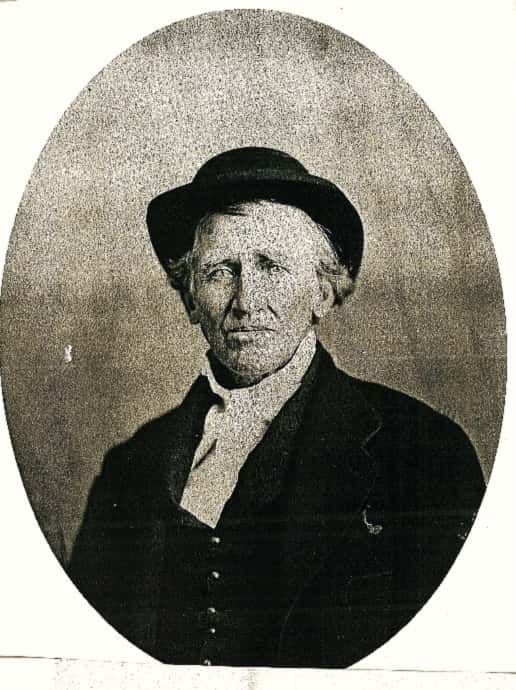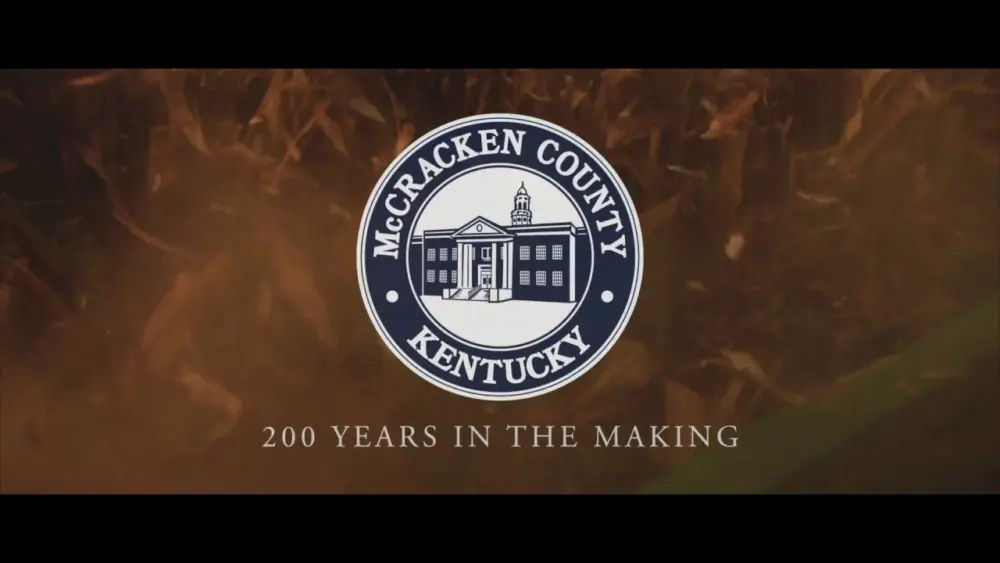THE SOUTH CAROLINA OF KENTUCKY PART VIII:
UNRECONSTRUCTED REBELS
Written by Justin Lamb

Above: Ex-Confederate James Brien of Marshall County was arrested in 1865 following his election as State Representative for violating a Reconstruction law barring ex-Confederates from holding public office
By the spring of 1865, the Confederacy soon faced the inevitable as defeat loomed near. Many Jackson Purchase soldiers, mostly from General Nathan Bedford Forrest’s army, began to return home to surrender and take their oath of allegiance. The Louisville Daily Journal commented the soldiers were convinced “the Confederate cause is collapsed, but even as they take their oath to the Union their true loyalty will always remain with the cause of the South.”
On April 9, 1865, Confederate General Robert E. Lee surrendered to General Grant at Appomattox Courthouse in Virginia. The war was virtually over. Many Jackson Purchase men were weary and ready to return to a state of normalcy with their families they had not seen in days or years. “At home with wife and babies,” wrote William Pirtle in his diary, “Went to Paducah and surrendered to Provost. Then to making a crop of corn.”
Though they had given up their arms against the Federals, the Purchase area Confederates still clung onto their Confederate politics. As ex-Confederates of the Jackson Purchase soon found their place in the Reconstruction era, they found refuge within the Democratic Party. Many ex-Confederates slowly returned to civic life as they worked to exert their control over political life in the region. Shortly after the Civil War ended in 1865, Democrats James Brien, State Representative-elect of Marshall County, John Oglevie, State Representative-elect of McCracken County, and James C. Calhoun, sheriff-elect of McCracken County, were arrested for violating the law barring ex-Confederates from holding public office. After a month of servitude, the men were released at the request of Governor Brammlette and their elections were recognized. By 1867, former Confederates were allowed to vote again in Kentucky and in post-Civil War Kentucky, the Unconditional Unionists and the Democratic Party vied for political power in the state. The Unconditional Unionists eventually joined the Republican Party.
Democrat Lawrence Trimble who had been elected in 1865, beat back a Republican challenger George S. Symes for Congress. Symes was referred to as a carpetbagger and had very little support in the Jackson Purchase region. With Union troop numbers dwindling in the Purchase, so was support for the Republican Party. The Jackson Purchase region, Republicans were painted as “radicals” and the Party of Lincoln would not fare well in the region for generations. With the Presidential election of 1868, Jackson Purchase voters proudly cast their vote for Democrat Horatio Seymour over Republican and former Kentucky occupier, General Ulysses S. Grant. The former Union General Grant won the election overall, but Kentucky gave Seymour one of the largest Democratic vote totals. With the Union occupation still fresh in their memories, Purchase voters gave an overwhelming majority to Seymour. The counties of Ballard, Fulton, Calloway, and Hickman gave over 90 percent of their vote to Seymour. Marshall, Graves, and Hickman gave at least 80 percent of the vote to Seymour. Historian Patricia Haskins observed, “Free at last from the Federal army, voters in the First District quickly elected former Confederates and Bourbon Democrats to high political positions. Simultaneously, eliminating any semblance of Republicanism from the landscape.”
Soon the First Congressional District of Kentucky became known as the “Gibraltar of Democracy” because of its steadfast loyalty to the Democratic Party and the Jackson Purchase was often called “the rock on which that Gibraltar rests.” Following the war, three former Confederates were elected as First District Congressmen: Edward Crossland, Oscar Turner, and William J. Stone. For nearly a generation after the war, a majority of every local official in each Jackson Purchase county were Confederate veterans. A Republican candidate for president would not carry a Jackson Purchase county until 1928 when Herbert Hoover narrowly carried McCracken County over Democrat Al Smith of New York whose Catholic faith was a major campaign issue in the South. In the years following the war, the entire state of Kentucky became transfixed with the Lost Cause of the Confederacy. Many counties and towns erected Confederate memorial statues and several Confederate heritage groups emerged such as the Daughters of the Confederacy and Sons of Confederates Veterans.
Following Hoover’s victory in McCracken County, another Republican would not carry a Purchase county until 1972 when Richard Nixon carried every county in the region as he coasted to victory over the left-leaning George McGovern. As the Democratic Party began to trend more toward the liberal left of the political spectrum, Purchase voters still held onto their conservative voting trends and began to stray away from their native Democratic Party which had once championed their views. Former conservative Democratic Governor George C. Wallace of Alabama carried Fulton and Hickman Counties in his 1968 presidential election on the American Independent Party. Wallace’s message of law and order and limited government resonated with many voters in the South who were growing tired of the liberal direction the Democratic Party was taking, but who were still leery of the GOP and the Party of Lincoln.
As the Republican Party began adopting more conservative policies, Purchase area voters begun casting their ballots for Republican candidates especially in state and national elections. A Democratic presidential candidate has not carried a Purchase county since 2000, when Al Gore of Tennessee carried Fulton and Ballard counties. Ed Whitfield became the first Republican to be elected First District Congressman in 1994, a seat he held until 2016.
The Jackson Purchase is still often alienated from the remainder of the state. Even today, residents feel ostracized from the halls of power in Frankfort leaving the Purchase to hang onto its independent status. As Patricia Haskins put it in her dissertation, The Old First is With the South, “Never the most economically or politically powerful part of the state, the Jackson Purchase remains a stranger in the strange land of Kentucky.” The Jackson Purchase region made its presence felt during the turbulent years of the Civil War by making it clear that it would go it alone by supporting the Confederacy, and in defeat, the Lost Cause of the South only intensified in the Jackson Purchase region as residents stubbornly held onto their Rebel heritage as a source of pride and identity. The Union may have won the war, but in the Jackson Purchase, the Confederacy unquestionably won the peace.






